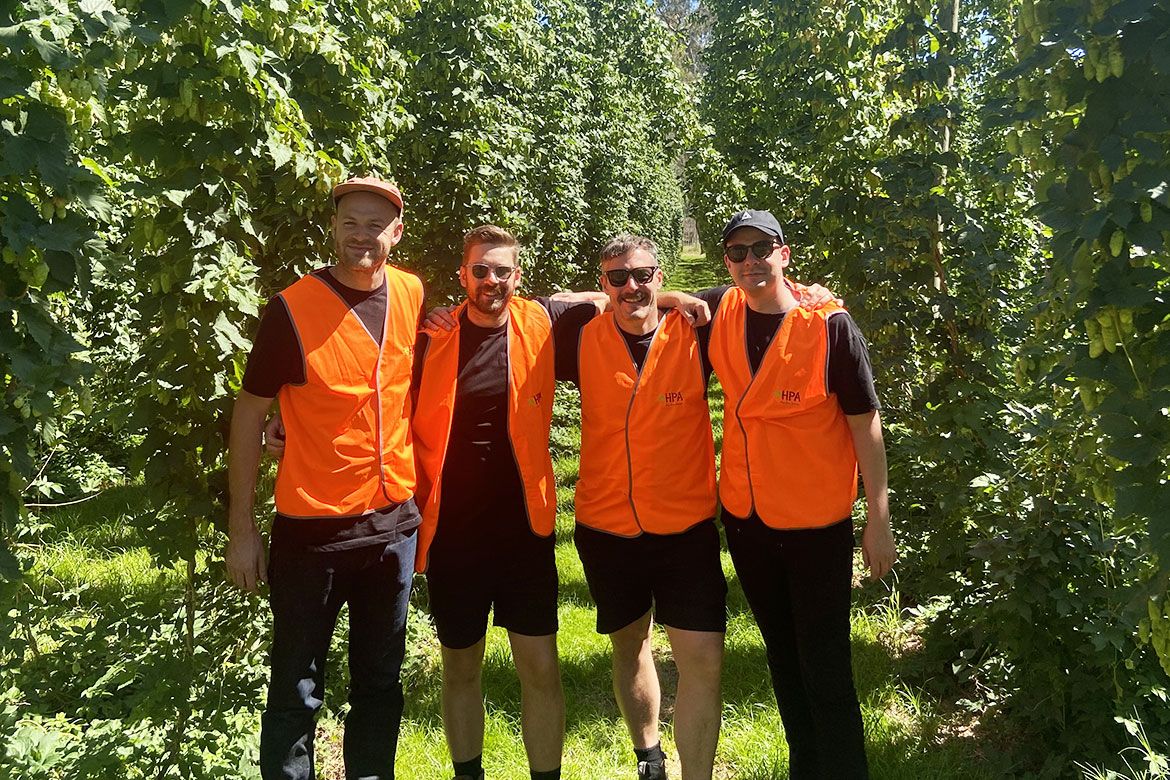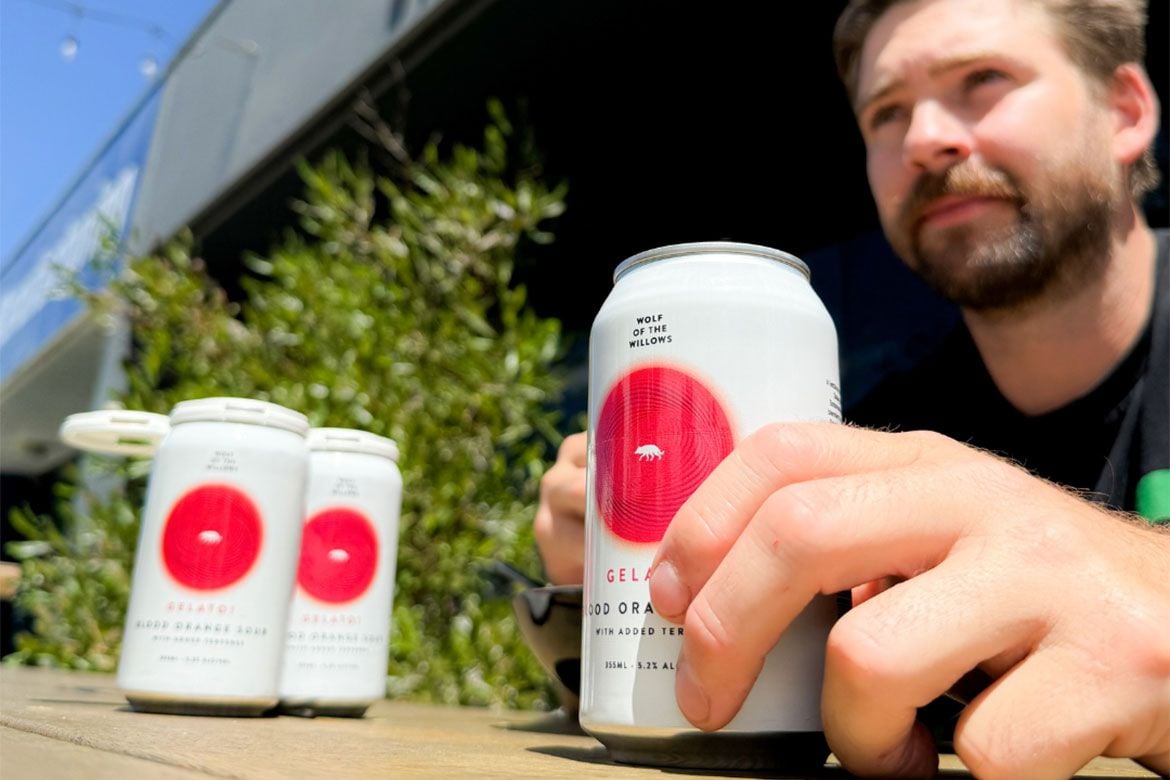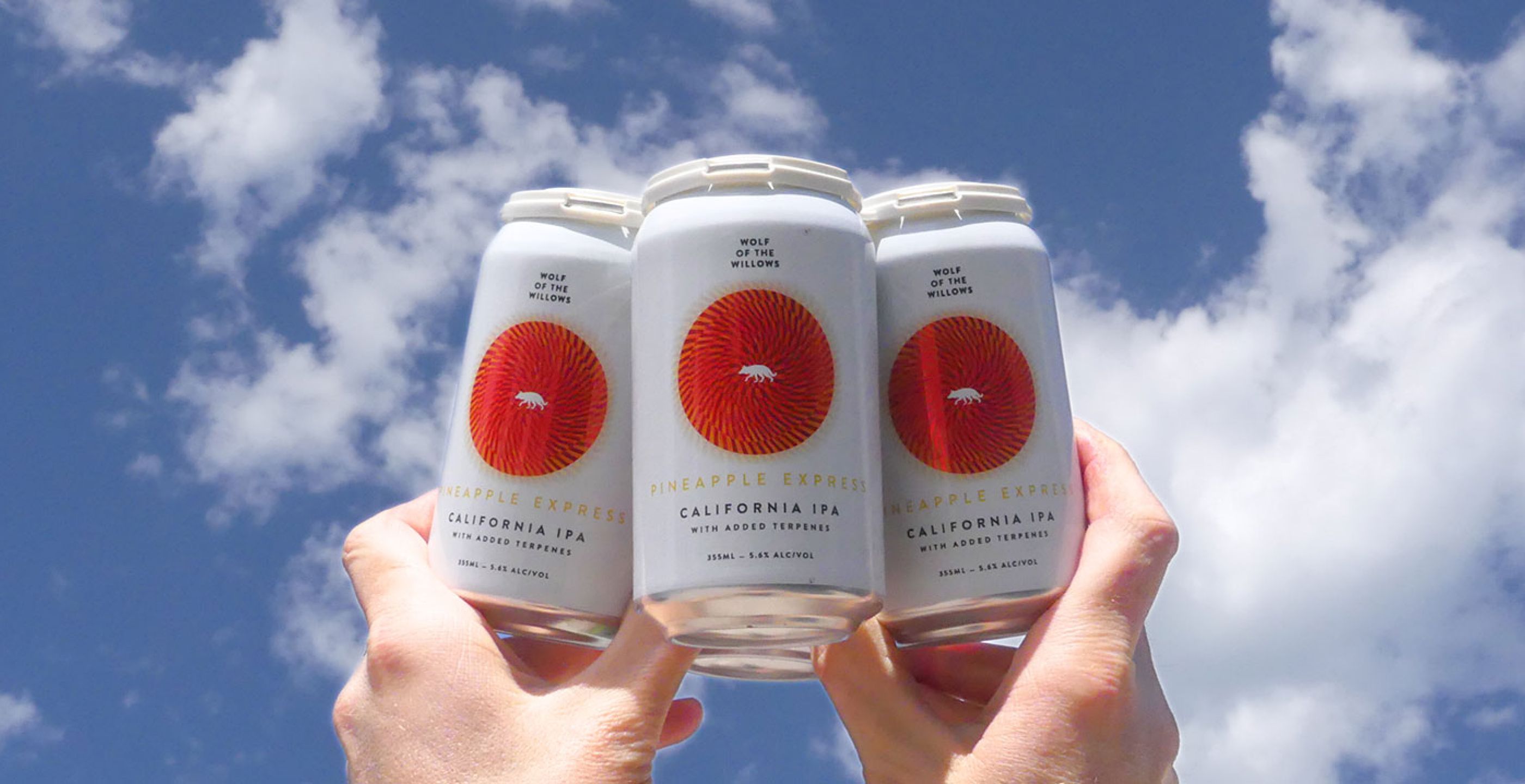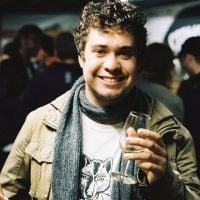Hops have long felt like the beating heart of craft beer. Sure, you wouldn't have something nearly as pleasant to drink without the malt, water and yeast, but it tends to be hops that are the biggest star in most new beer releases. What's more, it's varieties of this ingredient – above all others – that beer drinkers know by name.
So great is our love of hops that ingredient suppliers and brewers alike have turned towards increasingly concentrated pellets or liquids to squeeze more juicy, fruity or dank notes into their beer. Helping them in their quest these days are terpenes: the aromatic compounds found in plants and botanicals that both hops and their cannabis cousins have in spades, and which help drive those dank, earthy, piney and tropical notes to which craft beer drinkers tend to be so drawn.
They’re products Wolf of the Willows have been exploring in an ongoing series of beers made with terpenes designed to recreate popular strains of cannabis, such as Pineapple Express and King Louis XIII.
Brewery co-founder Scott McKinnon says their trialling of terpenes – which has taken close to a year – stemmed from an interest in the different dimension and layers of flavours they could add to beer.
“As a brewer and business owner, we’re all searching for new flavour compounds,” he told The Crafty Pint. “They’re important to beer if they’re genuinely adding something.”
Scott’s interest in terpenes came after drinking CBD beverages in America that featured added terpenes; his mind immediately jumped to the hoppy beers he loves.
“As you would expect, I saw the synergies with hops,” Scott says.

The growth in popularity of both THC and CBD drinks in America, as well as their relationship with craft beer, is a topic we explored last year. On these shores, Wolf of the Willows have been experimenting with different variations of terpenes, which comes in both liquid and powdered form. Scott says the ones they've used stem from botanical sources that aren’t cannabis, despite the clear olfactory connection you're likely to drawn between the two.
“Nothing comes from cannabis, these are all sourced from other botanical sources,” Scott says. "The key here is that, whilst they're botanical terpenes, they have the same chemical composition as terpenes from cannabis; our objective is to mimic the types and proportions of terpenes found in popular cannabis strains."
They’ve been using terpenes on the cold side of brewing in the same way you would carry out a traditional dry hop, and the best results they've had are through the liquid form. But they’re also continually experimenting with how best to use them in brewing and see a place for terpenes beyond IPA: their most recent release is a blood orange sour featuring Galaxy and Sabro called Gelato!
Those trials and beers haven’t come cheap, with the Mordialloc-based brewery sourcing terpenes from the US in small quantities. Beyond being interested in their flavour, Scott sees the potential for terpenes to improve yields too.
Like more concentrated hop pellets such as Cryo, or the many liquid hop products like Spectrum, Hopzoil and Hop Kief on the market today, Scott sees them as a way for brewers to get more bang for their buck.
“You’re able to create a more intense flavour profile with less loss out of a fermenter,” he explains.
“So, you’re getting increased flavour profiles because you’re also getting better yield not dumping too much out of the tanks.”
Given the impact seasonal variations can have on hop yields, Scott also wonders if terpenes can play a part in improving the resilience of the beer industry’s supply chain.
“These terpenes can provide another source of raw ingredients that can give similar, if not the same, type of flavour profile,” he says, adding that they’re still testing to see how beers “hopped” with terpenes can stand up against time.
“My hope is that terpenes can provide a more consistent hop profile as beer ages. The supply chain sometimes has challenges in Australia, so I’d love to see a really hoppy beer be at its best at something like six to nine months rather than three to four months."

The ever-experimental One Drop Brewing have also spent some time trialling terpenes through the likes of an American brown ale called Herd That! and Liquid Strata.
“The reason for that was to have an amplified character but also to increase yield,” head brewer Nick Calder-Scholes says.
“We’re all chasing more yield now because our hopping rates are going up. The market is asking for hoppier beers and therefore our wastage is going up and our yield is going down.”
Nick says One Drop have long been interested in advanced hop products or alternatives to hops; the brewery even releases an annual “Synthetic IPA” free from any traditional hops. They’ve found the most success from using terpenes alongside hops and hop products, although there have been examples where the flavours don’t quite stack up.
“I love it but it’s a lot of misses and not a lot of hits,” Nick says. “We see a three-pronged approach, which is still using a hop-based product, whether it’s T90 or Cryo pellets. Then one of these hop plant-derived products, whether it’s HopZoil or Hop Kief; the third prong is using [terpenes] to amplify and not replace.”
Although they continue to experiment with such products, Nick wonders if the dank, weed-like flavours of terpenes will appeal to enough craft drinkers here in the same way they do in parts of America, pointing to how ingrained both cannabis culture and craft beer have been in California for so long.
“That’s not really here like it is in the States, for reasons of legislation,” he says. “But even before it was legal, the West Coast had this really big weed culture in the same places where craft beer bloomed.”
The relationship between craft beer and cannabis is another part of the terpene puzzle in which Scott has taking a keen interest. He’s looked at how quickly so much of America has accepted medicinal and then recreational cannabis and wonders what the future will look like in Australia.
“Now we’re seeing legislation start to catch up, although we still have a long way to go in Australia,” he says.

As craft beer struggles to some degree to appeal to younger drinkers, he believes there’s also a generational change in how cannabis use is perceived.
“The stigma attached to these types of products has pretty rapidly changed,” Scott says. “At the stem of that is education.”
Beyond just THC and CBD, Scott is interested in research around other compounds within cannabis and terpenes that could have an impact on a range of functions too. Known as the “entourage effect”, it refers to how other cannabinoids could have therapeutic benefits, in the same way burning a lavender-infused candle might be sold with a promise that it will chill you out.
"The use of essential oils," Scott says, "which are generally terpene heavy, have been used for centuries to help calm, relax, and focus. I'm hoping further research can be undertaken for us to understand the potential sensory effects of terpenes in isolation, and also with THC, CBD, and possibly even alcohol."
It’s a future industry that’s far from clear, but that hasn't stopped him from pondering the role craft breweries could play if, as in America, legislation allows for CBD- or THC-based products to be made here.
Already, many brewers have turned to products outside of beer, such as hard seltzer, hard lemonade, ginger beer and RTDs, and craft brewers are well placed to intertwine any future drink products with what they're already doing.
“I think as a craft beer industry we have to embrace it, or it could become a competitor to what we’re doing.”
Regardless, as they keep exploring terpenes, the biggest takeaway to date has been the feedback Wolf of the Willows have been getting from venues, bottleshops and drinkers.
“I think the beers speak for themselves,” he says. “If terpenes make the beer taste better and gives it more layers than without them, then I think that’s all that matters.”
If you'd like to learn more about terpenes, medicinal cannabis in Australia, and what's going on in this space in America, join The Crafty Pint and Wolf of the Willows on February 28 as we discuss all of the above.



















